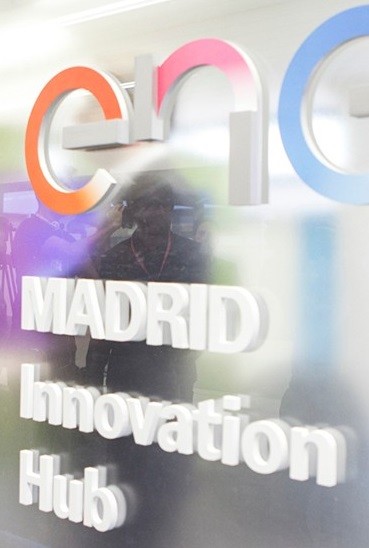“The future is space,” wrote the great Chilean poet Pablo Neruda. “Earth-coloured space, cloud-coloured, colour of water, air, black space with room for many dreams.” Only rarely has the future given us the kind of space to dream and imagine how our world might change that is offered by blockchain technology. The term will probably mean little to most people but it will soon be a huge part of our lives. This is why it was selected as the topic for the latest event in our #EnelFocusOn series, conceived to promote discussion about the future use of new technologies. This was the sixth edition after previous meetings in Rome, London, San Francisco, New York and Madrid.
This time the chosen venue was Santiago de Chile where the #EnelFocusOn was held at the Moneda Cultural Centre in the Presidential Palace. Introduced by Enel Director of Communications Ryan O’Keeffe, the debate centred around possible energy sector applications for blockchain technology. Chairing the debate and answering questions posed by influencers from Europe and South America, was the author of the best-seller Twitter Power 3.0, Joel Comm, a marketing expert, web evangelist and, more importantly, a futurologist whose predictions are so razor-sharp that he launched his first website in 1995, three years before Google was invented.
A disruptive technology
So what is blockchain and how does it work? Comm explained that it is a technology that “lives somewhere in the cloud,” and enables the registration of transactions, or blocks, in a distributed ledger of infinite dimensions. The authenticity of the blocks is validated by a number of third-party computers that contemporaneously and independently send the correct solution to complex calculations. The ledger is public and cannot be modified. It is also perfectly transparent and so impossible to manipulate that the association that oversees the London bullion market has identified it as the perfect way to guarantee the traceability of gold ingots and to combat money laundering.
The implications may indeed be endless and have yet largely to be explored or even invented. For the most part, however, they will help improve our lives. But how? It is up to us to decide. “If there is one certainty in the world of technological evolution,” Comm declared, “it is that everything will change. Revolution is constantly just around the corner and it is a risk for all companies. Blockchain is just the latest face of thispermanent revolution. In fact, I am sure that it will become the most disruptive technology we have ever experienced in our lifetimes. It will have an impact on everything: banking activities, all kinds of payments and financial transactions, the way we vote, education, our credit histories, insurance, government records, business contracts, retail, health. And, of course, energy.”
Enel and the Enerchain consortium
“It is no coincidence that we decided to develop in-house skills to create our own blockchain innovation group,” explained Marco Gazzino, Enel Head of Partnerships and Innovation Intelligence, who was following the #EnelFocusOn meeting back in Italy via live stream. “For us, this is a way to explore this technology and make contact with expertise outside the company, with startups and innovators, because we want to play an active role in taking full advantage of its potential. We have also founded Enerchain, a consortium that brings together utilities and energy trading companies, and enables all parties to make safe and sustainable trades. Last October, Enel also completed the first energy transaction outside the traditional market.”
Few days ago Endesa, the Spanish subsidiary of our Group, and Gas Natural Fenosa have become the first companies on the Iberian Peninsula to buy and sell energy using blockchain technology (for a total of 5.95 GWh of natural gas).
Furthermore, on 30 January, in the wake of the Enel Open Innovation Community’s activities, we hosted ablockchain meetup at the Auditorium on Via Mantova in Rome attended by sector experts, internationally-renowned speakers and also representatives from other utility companies.
The black space of the future
Back in Santiago, Comm cited the example of an Australian platform based on blockchain technology that allows the trading of renewable energy between producers (both private individuals and companies) and consumers, by allowing the latter to purchase energy in advance according to their needs and to keep it in a virtual storage facility. A sort of “energy Amazon”, as Comm defines it, capable of drastically reducing transport and transaction costs and, consequently, the overall cost of the energy itself.
“In the energy sector, and in many others, there are two ways of dealing with blockchain technology: you can embrace it, make it your own and use it to make the whole system more efficient, lowering prices and improving the quality of services available to customers, or you can reject it, ignore it and continue as usual. But there is one thing that you definitely won’t be able to do and that is turn it off,” warned Comm as he concluded his address in Santiago.
“The technology is here, it exists out there on the web, and it is something we will have to deal with sooner or later. Enel has very wisely chosen to acknowledge the importance of blockchain technology from the outset, embracing it and studying it very closely to exploit it to the fullest. We don’t know where all this will take us, but we do know that it is the right road to go down.” The road towards that big black space that Neruda called the future, and that is waiting to be filled by our imagination.





